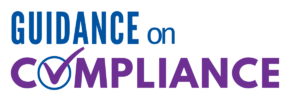Selecting codes for your Skilled Nursing Facility (SNF) claims can often be mind-boggling. Residents are admitted to SNFs with varying length of stays and the admission reason is often different from the reason for continued stay. Diagnosis codes can be assigned at the time of admission, concurrently as diagnosis arises, and at the time of discharge. In any of these situations, a principal diagnosis may represent the admission diagnosis, the reason for continued stay, or discharge diagnosis.
There are four common diagnoses are
- admission,
- primary,
- discharge, and
- secondary.
Admission Diagnosis Codes
When selecting the admission diagnosis, this diagnosis should be for the condition that necessitated the resident’s admission to the facility and the reason the resident needs care. During the time of admission, information is collected on the resident, which should be related to the resident’s preceding hospital stay. The hospital’s final diagnosis will indicate the reason the resident was treated in the hospital. It’s important to note that the hospital’s principal diagnosis may not be the reason long-term care is needed. SNFs should assign aftercare codes or a condition code with a seventh digit indicating subsequent care.
Primary Diagnosis Codes
Primary diagnosis codes are selected for the condition responsible for the resident’s admission to the facility. Often, nursing facilities confuse the various diagnosis codes. The primary diagnosis is also used to represent the reason for the resident’s continued stay in the facility after the admission diagnosis has been resolved.
Discharge Diagnosis Codes
A discharge diagnosis should be selected when a resident is discharged to home, transferred to another facility, or at the time of death. If a resident dies or is transferred to another facility, the discharge diagnosis would be considered the cause of death or the reason for transfer. If a resident was discharged to home, the discharge diagnosis would be the same as the principal diagnosis.
Secondary Diagnosis Codes
The fourth type of diagnosis code is secondary diagnoses. These are also known as additional diagnoses. These diagnoses should be for all conditions that coexist at the time of admission, develop during the resident’s stay, or affect the treatment the resident receives.
Selecting the correct diagnosis code is essential to capturing the clinical condition of residents. While diagnostic coding in SNFs is not directly related to reimbursement, coding incorrectly may incite a medical review of claims. Is all of this confusing to you? Well, you’re not alone.

